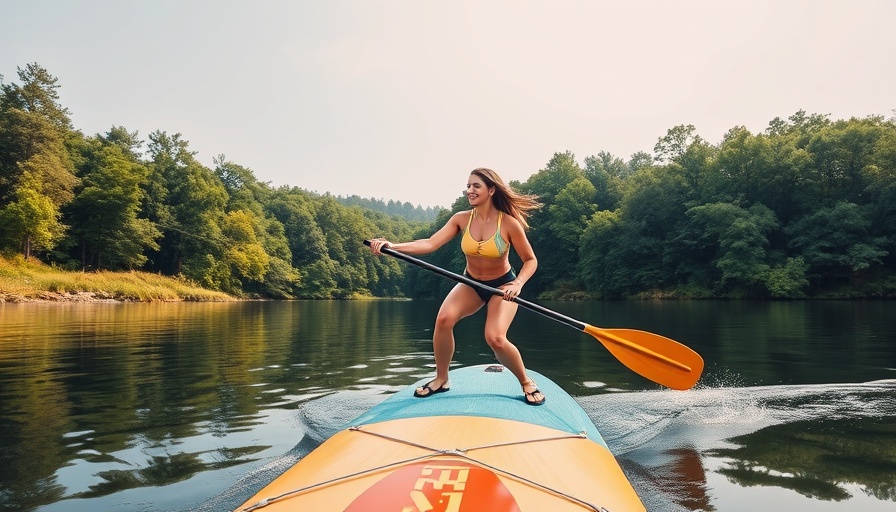
Understanding Water Safety: Why It Matters for Outdoor Enthusiasts
As summer heat draws families and adventure seekers to lakes and rivers, understanding water safety has become a non-negotiable aspect of enjoying time outdoors. The recent tragic incident involving paddleboarder Sunshine Stewart highlights the urgent need for vigilance beyond traditional safety measures like wearing life jackets and checking weather conditions. Modern water recreation demands awareness of personal safety and self-defense, particularly in quieter, less monitored areas where threats may lurk. With increasing numbers of people venturing into isolated spots for outdoor activities, securing one's safety has grown in importance.
Essential Gear for Staying Safe on the Water
While wearing a life jacket and telling someone your plans are foundational, incorporating high-visibility equipment and emergency communication devices can enhance safety significantly. Brightly colored gear such as kayaks or paddleboards not only aids visibility but can deter potential threats, signaling that a paddler is equipped and alert. Emergency communication devices tailored for marine environments, like waterproof Personal Locator Beacons (PLBs), ensure you're prepared even when cell service is unreliable. Having a means to communicate with others in emergencies can make all the difference in rural water scenarios.
Integrating Self-Defense Training for Outdoor Safety
Outdoor enthusiasts, especially women, confronting the reality of personal safety during water activities should consider integrating self-defense training into their routines. Empowerment-focused training aimed at enhancing confidence and discipline can help individuals respond effectively in threatening situations. For instance, many self-defense systems emphasize ground control skills and submission tactics, which are useful for evading danger in close-contact encounters. Training in self-protection drills tailored to aquatic environments cultivates not only physical skills but also mental resilience, a crucial element when facing unexpected adversities.
Unique Challenges of Defending Yourself in Aquatic Environments
Defending oneself on the water presents its own challenges. Striking or applying holds can be difficult in a buoyant environment. Therefore, techniques from grappling-based martial arts are particularly pertinent in these scenarios. Ground control tactics can prove effective in water, allowing individuals to maintain stability while they navigate threats. Practical brawling techniques can also be incorporated into training sessions, making them adaptable for both aquatic and closed-contact situations. Knowing how to employ these methods can greatly increase someone's readiness for potential confrontations.
Conclusion: Building Confidence Through Knowledge and Action
Ultimately, the blend of water safety awareness with self-defense preparation fosters a holistic approach to outdoor recreation. Understanding potential risks and employing practical self-defense strategies leads to more enjoyable experiences in nature’s tranquility. Equip yourself not just with life jackets but also with the mindset and skills to safely navigate challenges. Build confidence, discipline, and strength—enroll now at Gruber’s Karate, Gurnee’s trusted martial arts training center.
 Add Row
Add Row  Add
Add 




Write A Comment